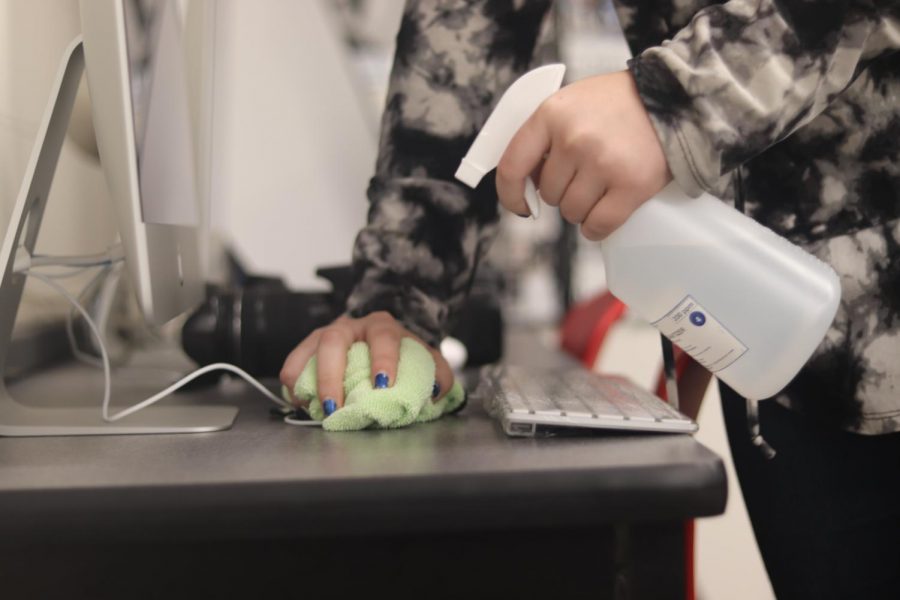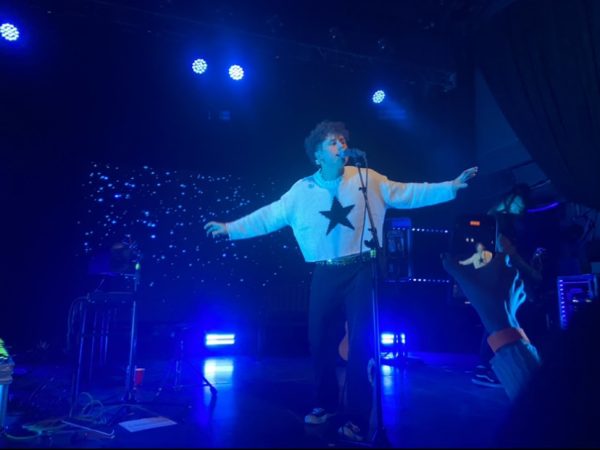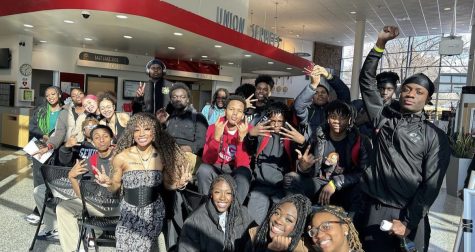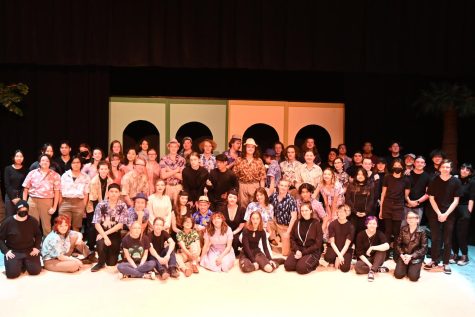COVID-19 has brought engineered water into classrooms
ON THE first day of school it was announced to Lancer’s that the last five minutes of class were going to be used for cleaning. With the COVID-19 pandemic going on, new regulations were to be expected for the school. It was announced that the cleaning solution that was going to be used was engineered water.
Many Lancer’s were skeptical about if it was going to be effective. Not a lot of information was known by students on how it works. Aubrie Moss, a tenth grade student attending Granger in person, had questions on it. “How’s the water engineered,” “What does the engineered water do to disinfect surfaces that potentially have COVID-19 on them?” and, “Is it safe for the skin?”, were a few of her questions. She’s not the only one with questions either.
Many didn’t think it was going to do anything. So, does it work and how?
What is engineered water? It’s a mixture of water and hydrochloric acid. They use the water to dilute the acid, but the main disinfectant agent is hydrochloric acid. Hydrochloric acid comes from salt water after it goes through electrolysis. Mr. Dain, a chemistry teacher at Granger said that electrolysis is,”Electricity causing the salt (sodium chloride, NaCl) to react with the hydrogen and oxygen in the water to create HOCL.”
How does water and acid work together to work against the Coronavirus? Mr. Dain explained, “Hypochlorous acid is an oxidizer, similar to bleach or hydrogen peroxide. Oxidation causes damage to genetic material, like DNA or RNA, and makes it so that the virus can’t replicate. It also disrupts the membrane layer on the outside of the virus.” NCBI leads to the conclusion that this mixture attacks proteins on the outside of the virus, but also disrupts its RNA on their website. (https://tinyurl.com/y6xadgcf)
When asked, Mr. Dain said that the engineered water and rag combination was effective. It’s cost friendly, effective, and safe.
The engineered water is effective, cost friendly, able to be made in wide batches, and safe, so what are some down sides to it? Well according to NCBI the solution has to sit on a surface for a minute for it to be effective. Mr. Dain pointed out some limitations stating, “If not used correctly, the cleaning solution can’t be effective. We have to make sure to let the solution sit for one minute before wiping down with a rag, and we have to make sure to use enough to clean the entire surface. Too quick or too small won’t work in these situations. HOCl is also fairly unstable, meaning it starts to break down when exposed to heat or sunlight. Even if kept in a cool, dark location, the solution can only stay potent for two weeks. New solutions need to be generated regularly to maintain efficacy.”
Another variable in the cleaning equation is the rags. The rags are washed daily with hot water and soap, but they are used a lot throughout the day. The rags are used by multiple kids in the same class period. There’s several people touching it in one period leading to more exposure. Even if each class room had enough for each student to use one, there would still be four people touching the same rag throughout the day.
So what can we change about the rags? One possible solution would be to give each student one rag, although that would be a lot of rags and come with the possibility of them being lost. So, the next most logical solution would be to have the teachers use one rag and clean the desk down themselves. That would be one person touching the rag. Teachers would also be able to make sure that the solution sat for the right amount of time.
In conclusion, the solution does work well if used correctly, is cost effective, and safe. The solution itself is better than what most Lancers thought, but there is still room for improvement. If some changes were made to the way that it is used to clean then the solution would be more effective.










